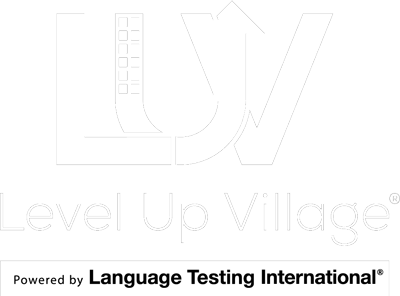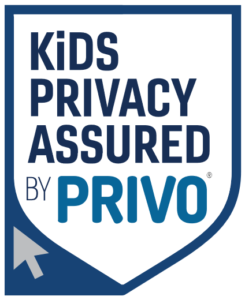At the grocery store with your kids?
Do some #math.
Apples at $0.99 per pound or 3lbs for $4.99… pic.twitter.com/C9urzGWFAz— dailySTEM (Chris Woods) (@dailystem) October 31, 2016
By Chris Woods
STEM.
It seems that educators are always coming up with acronyms and buzzwords to try and improve education.
PBL.
Why do we like our buzzwords? Are we trying to sound informed and smart, like we’re part of a secret club that knows the secret password?
Flipped classrooms. Blended learning. Differentiated instruction. BYOD.
Go back in time and our kids learned “The Three R’s.” We’ve always tried to come up with words, phrases, acronyms, and buzzwords in an effort to reduce education to a formula that works. As if our kids are just raw materials. Do we really just look at education as a machine? Drop in a 5 year-old kid, give it 12 cranks, and out pops an 18 year-old ready for “success.” Whatever that means.
I worry about education. I fear the elevation of instruction and curriculum and standards, leaving precious little time for inspiration. I’m scared that a great idea like Project Based Learning or focusing on Science, Technology, Engineering, and Math will lose their draw once they’re reduced to kits and checklists. And don’t forget, somehow politicians and well meaning companies and organizations will pump millions of dollars into special programs, whether they work or not.
Meanwhile, the teachers on the front lines will still be overwhelmed with daily paperwork and keeping kids on task. The kids in the classroom will realize that PBL or STEM are these “once a month” programs that have nothing to do with the homework they get every other day of the month. And parents will wonder why their kids aren’t just learning what they did when they were in school.
So, this is a tipping point, educators.
We have to make a decision.
Are we going to make STEM, PBL, differentiated instruction, and any of these part of our everyday classroom? Or are we going to do them only when it’s convenient, which eventually will be not at all.
I’ve already decided. I’m adding STEM to my classroom everyday and encouraging other teachers to do the same. I’m beginning to add more PBL into my regular instruction, not just as end of chapter “dessert” projects. And there are lots of ways to add STEM simply and effectively, whether you’re a geek or not, that will engage and inspire your students. Here are a few.
#STEM is everywhere, even mcdonalds on Friday night….#findandshareSTEM pic.twitter.com/gDDIXyLDe8
— dailySTEM (Chris Woods) (@dailystem) January 16, 2015
Here’s how I usually do it…
Step 1: Read the news on your favorite news site.
Step 2: Look for headlines that seem to suggest something STEM might be involved (a good place to try is on the “technology,” “science,” or “business” sections of the website).
Step 3: Display the article on your projector screen during class. Point out a few sentences or paragraphs, and ask your kids some open-ended questions. Or you can share the link with your students, and provide them a few minutes to read the article, then discuss or write about it. It can even be used as a starter for a creative writing assignment.
It’s that simple. And it can help inspire your students.
Story Problems and Real World Data
I’ll admit, I’ve always been discouraged by story problems in math class. In fact, one of the biggest reasons people don’t like math is because of story problems. I’ve made it a personal mission in my classroom to rid the world (or my small corner of our school building) of bad story problems. Get rid of those outdated, irrelevant, and poorly worded story problems. Work with real numbers instead of fake data about the number of apples or goats or mayonnaise jars. Here are a few examples of things I have done in my classroom and with my own kids that have made real data and real situations into “real” story problems.
my students recorded real data on our @Elkay_USA drinking fountain at school…next up, a regression equation#math pic.twitter.com/NGjFhge3go
— dailySTEM (Chris Woods) (@dailystem) December 4, 2015
Idea 3: Tile with Pennies
Recently in my geometry class, we were discussing how some polygons tile, or fit together, and some don’t. I asked them if circles tile, and of course they came to the conclusion that circles don’t because they didn’t fit together tightly. So I put Google Images up on the screen, typed in “tiling pennies” and opened up their eyes to some amazing tiled floors using nothing but pennies. That led to the students posing the question “how much would it cost to tile a floor?” And that led to an activity the next day where I, armed with little more than a bunch of pennies from home and rulers, asked the students to determine how many pennies it would take to tile an 8 ft x 10 ft bathroom. They had a lot of fun, and used creative thinking and problem solving skills (they obviously didn’t have enough pennies to do a whole floor). I didn’t make a big deal or lesson plan for this activity, it just grew naturally out of their inquisitiveness.
Do that in your classroom, use their interests and questions to draw some STEM into your classroom.
STEM truly is all around us. But if we’re not careful, STEM will be nothing more than another educational fad that never lives up to the hype. Use the opportunities you have as an educator to not just teach students, but inspire them. Inspire them with the STEM that’s all around us.
#geometry class did the #math…approximately $180 to tile an 8×10 ft room with pennies.@mturesearch pic.twitter.com/Ub8ZTEPto3
— dailySTEM (Chris Woods) (@dailystem) September 13, 2016




